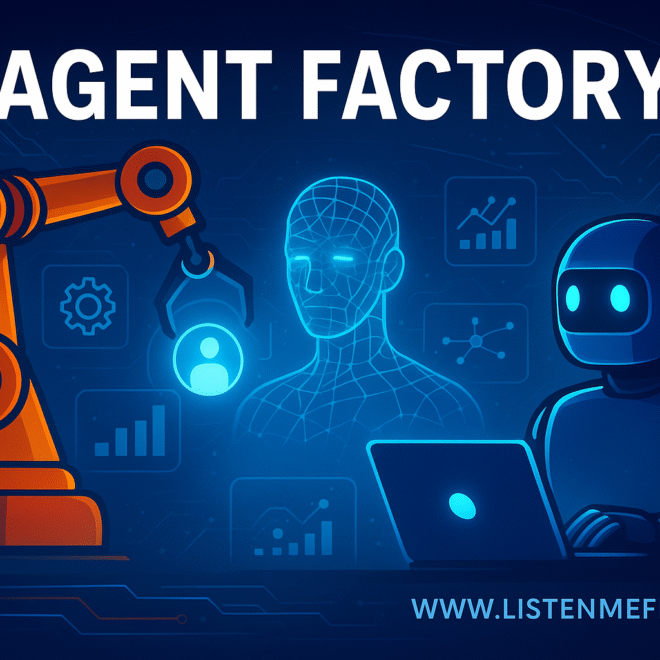Agentic AI is moving beyond experiments into practical applications. From task automation to intelligent workflows, “Agent Factory” represents a new wave of design patterns shaping how AI agents are built and used.
Artificial Intelligence is evolving rapidly, and the latest frontier is agentic AI—systems that don’t just answer questions but act, collaborate, and execute tasks on behalf of users. This shift has given rise to what many are calling the “Agent Factory” era, where frameworks, platforms, and design patterns make building AI agents more accessible and scalable.
Agentic AI agents differ from traditional models because they can make decisions, connect with tools, and manage multi-step processes. For example, instead of simply summarizing a document, an AI agent could read contracts, highlight risks, send emails to relevant parties, and even track deadlines automatically. This leap in autonomy is changing the way industries think about automation.
Common Use Cases:
- Business Operations – AI agents are being deployed to handle repetitive tasks like scheduling, reporting, and data entry, freeing employees to focus on creative work.
- Customer Support – Intelligent agents can resolve queries, escalate issues, and provide real-time personalized responses, improving both speed and customer satisfaction.
- Research and Analysis – Agents can scan thousands of documents, synthesize insights, and prepare reports within minutes—tasks that would take humans days or weeks.
- Software Development – Developers are using coding agents to generate, debug, and test code, accelerating the entire development lifecycle.
- Personal Productivity – From managing emails to automating daily reminders, personal AI agents are becoming digital assistants tailored to individual needs.
Design Patterns in Agentic AI:
The “Agent Factory” movement is not just about building agents but about building them right. Some emerging design patterns include:
- Tool-using Agents – Designed to connect with APIs, databases, or apps, enabling real-world action.
- Collaborative Agents – Multiple agents working together, each specializing in a specific task, like a digital project team.
- Memory-enabled Agents – Equipped with short-term and long-term memory for context-aware decisions and learning over time.
- Feedback Loops – Systems where agents monitor their own performance and improve iteratively.
The promise of agentic AI lies in scalability. Instead of reinventing the wheel for each use case, developers can now assemble pre-built components from the “factory floor”—streamlined frameworks, modular designs, and reusable patterns that bring ideas to life quickly.
As AI adoption accelerates, agent factories could become as important to the AI ecosystem as app stores were to the smartphone revolution. The question is no longer if agentic AI will transform industries but how fast businesses will adapt to this new paradigm.







